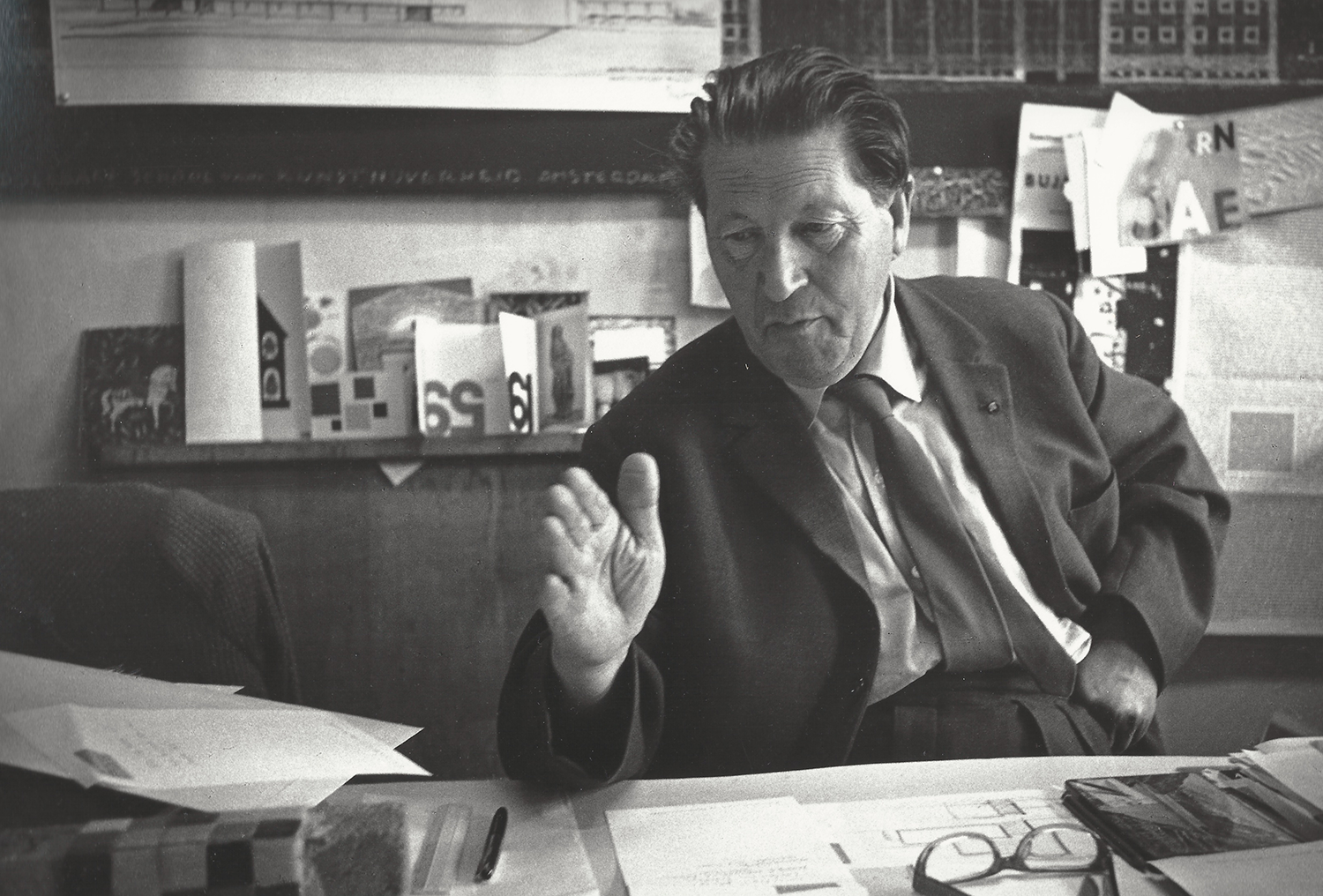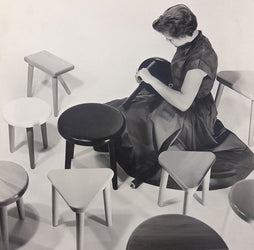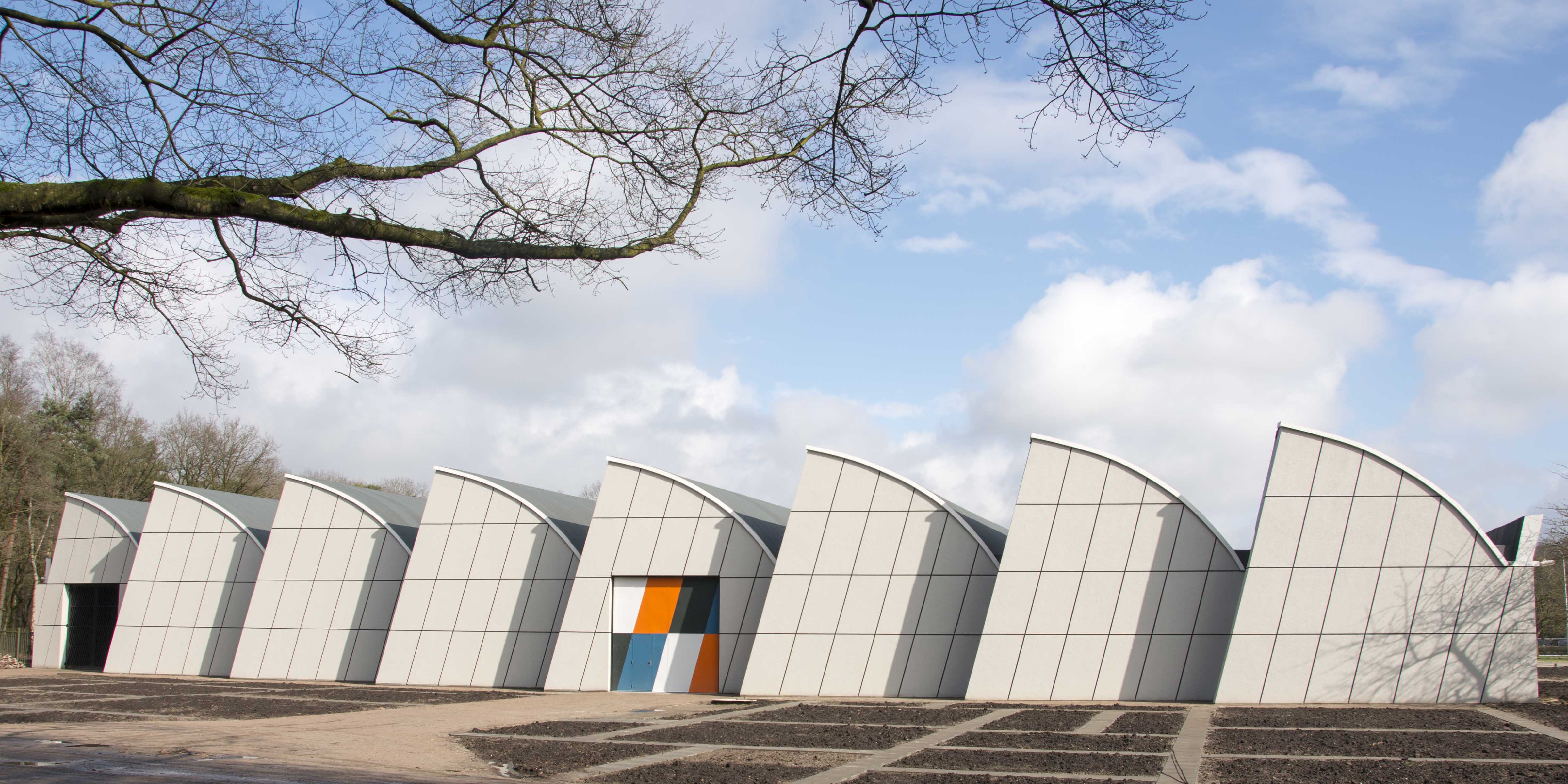By founding ‘t Spectrum, Blijenburg prevented its employees from being employed by the occupying forces, and the relationship with the country’s customers was maintained. In the early years, a Supervisory Board was appointed, consisting of the architects Eschauzie, Jansen and Gerrit Rietveld. The latter was only announced after the war. Because Rietveld refused to become a member of the Culture Room set up by the occupying forces, he was not allowed to be active in his own working area. As a member of the Supervisory Board, Rietveld was closely involved in the development of the first Spectrum collection.



